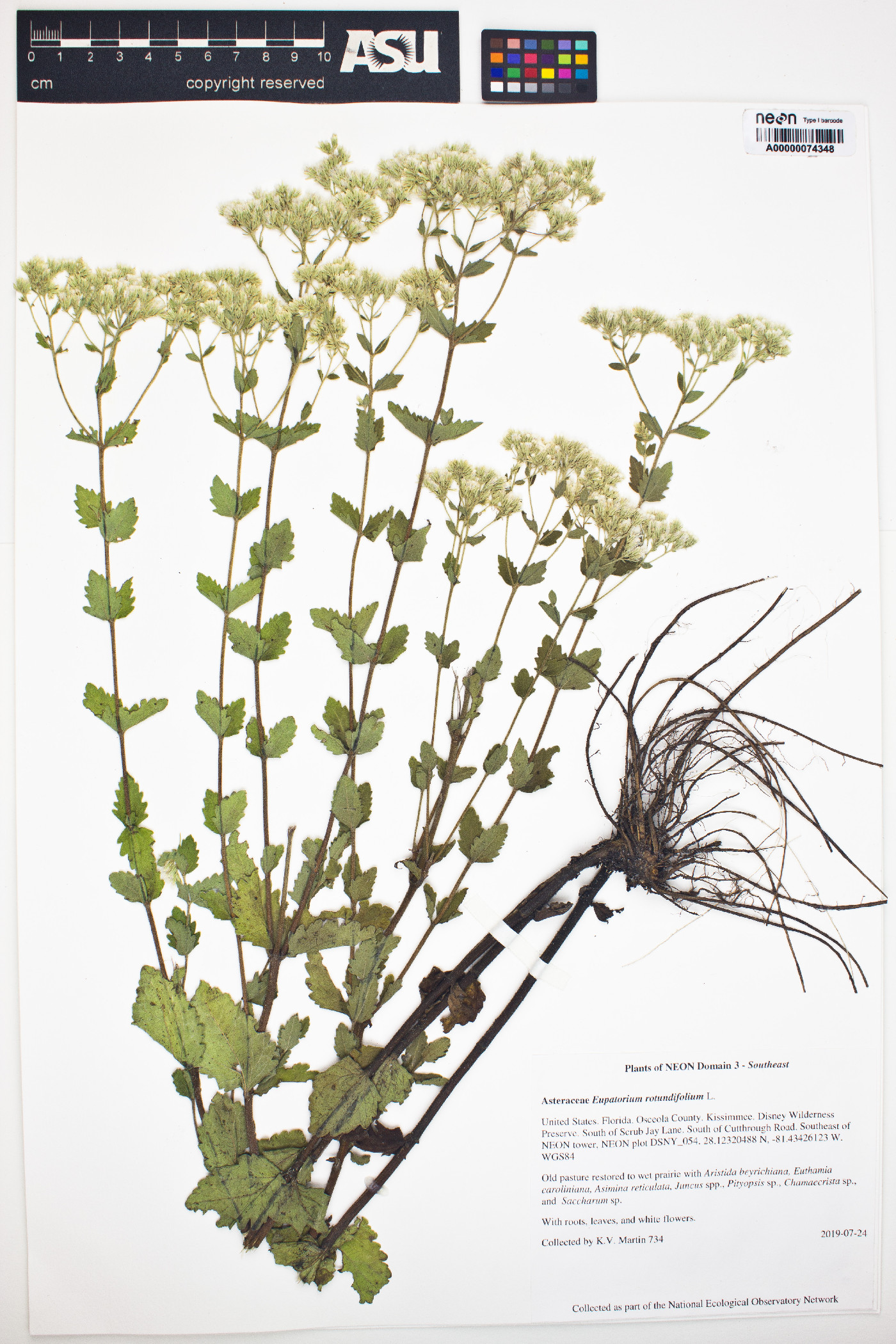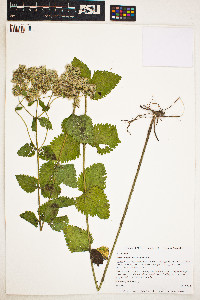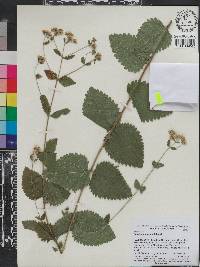|
|
|
|
Family: Asteraceae
roundleaf thoroughwort
|
Perennials, 40-100+ cm. Stems (from short rhizomes) single, sparsely branched distally, puber-ulent. Leaves usually opposite (distal sometimes alternate, lateral buds dormant or producing 1 pair of leaves); sessile or subsessile; blades ± 3-nerved, usually ± deltate to orbiculate, sometimes ovate, 15-50(-70) × 15-40(-60) mm (lengths mostly 1-2 times widths), bases broadly rounded to truncate, margins crenate to serrate, apices acute, faces puberulent to villous, gland-dotted. Heads in corymbiform arrays. Phyllaries 8-10 in 2-3 series, elliptic to oblanceolate, 2-6 × 0.5-1.5 mm, apices acute, abaxial faces puberulent, gland-dotted. Florets 5; corollas 3-4 mm. Cypselae 2-3 mm; pappi of 30-40 bristles 3.5-4 mm. Eupatorium rotundifolium is one of the more variable species of the genus; its apparent propensity to hybridize with other species has led it to be described as a compilospecies and has complicated its delimitation. Hybrids with E. perfoliatum and E. sessilifolium are sufficiently distinctive to be treated here as distinctive entities (E. ×cordigerum and E. godfreyanum, respectively), and the varieties ovatum and scabridum have also been proposed to be of hybrid origin. The boundaries between varieties are indistinct and individual specimens may be difficult to place with confidence.
Stems 3-15 dm, mostly 1-2 from a short rhizome or crown; herbage pubescent throughout with spreading, usually short and soft hairs, commonly atomiferous-glandular as well; lvs opposite, or the upper seldom alternate, sessile or subsessile, ovate (mostly broadly so) to subrotund, evenly toothed except in var. cordigerum, broad-based and distinctly trinerved or triplinerved, 2-12 נ1-6 cm; invol 4.5-6.5 mm, its bracts imbricate, sharply acute to obtuse, evidently villous-puberulent and often also atomiferous-glandular; fls 5 (to 7 in var. ovatum), white; 2n=20, 30, 40. Woods, in dry or seldom wet soil; Me. to Fla., w. to s. O., e. Ky., Tenn., Okla., and Tex. July-Sept. Sp. here considered to consist of 3 vars. Gleason, Henry A. & Cronquist, Arthur J. 1991. Manual of vascular plants of northeastern United States and adjacent Canada. lxxv + 910 pp. ©The New York Botanical Garden. All rights reserved. Used by permission. |




